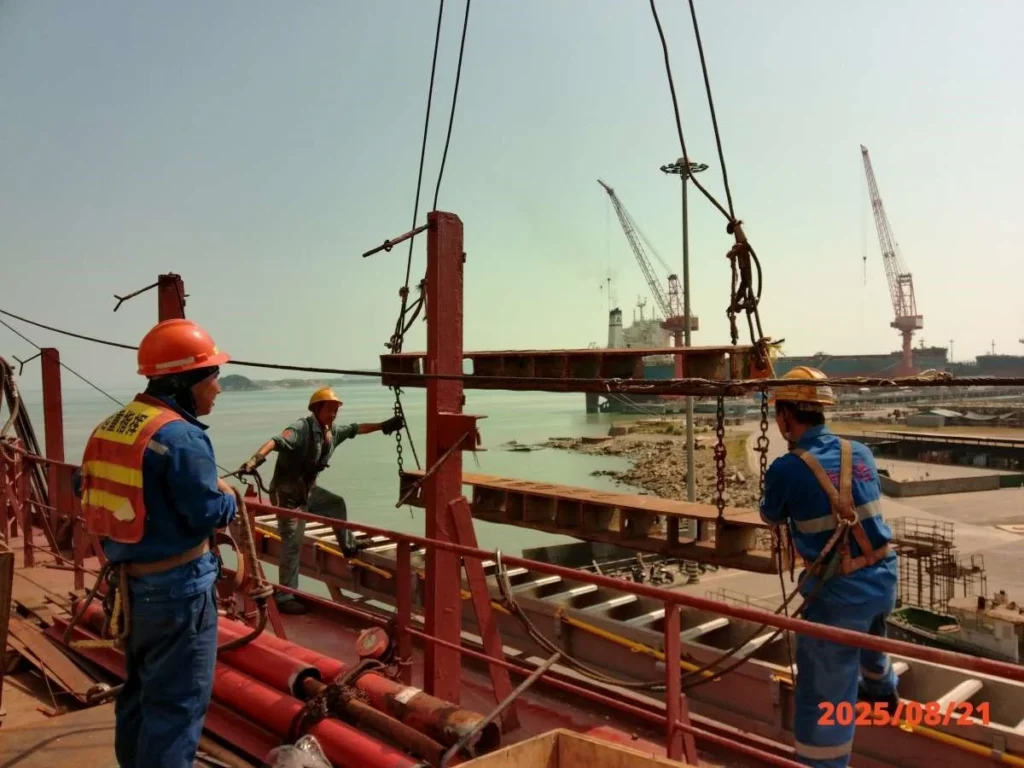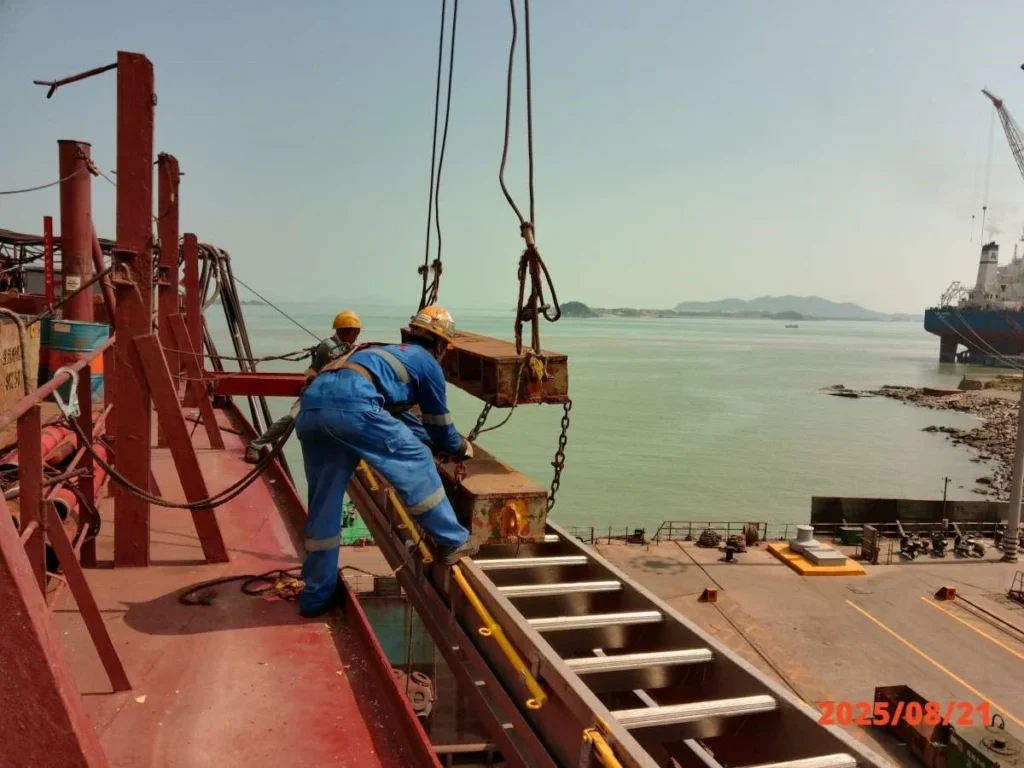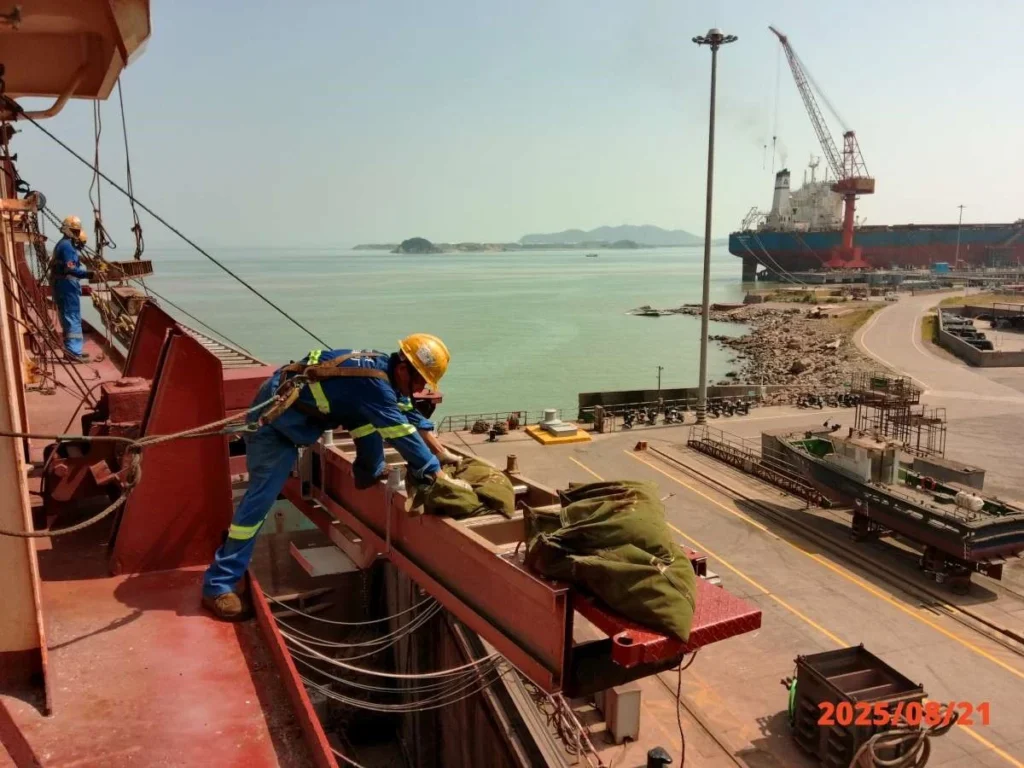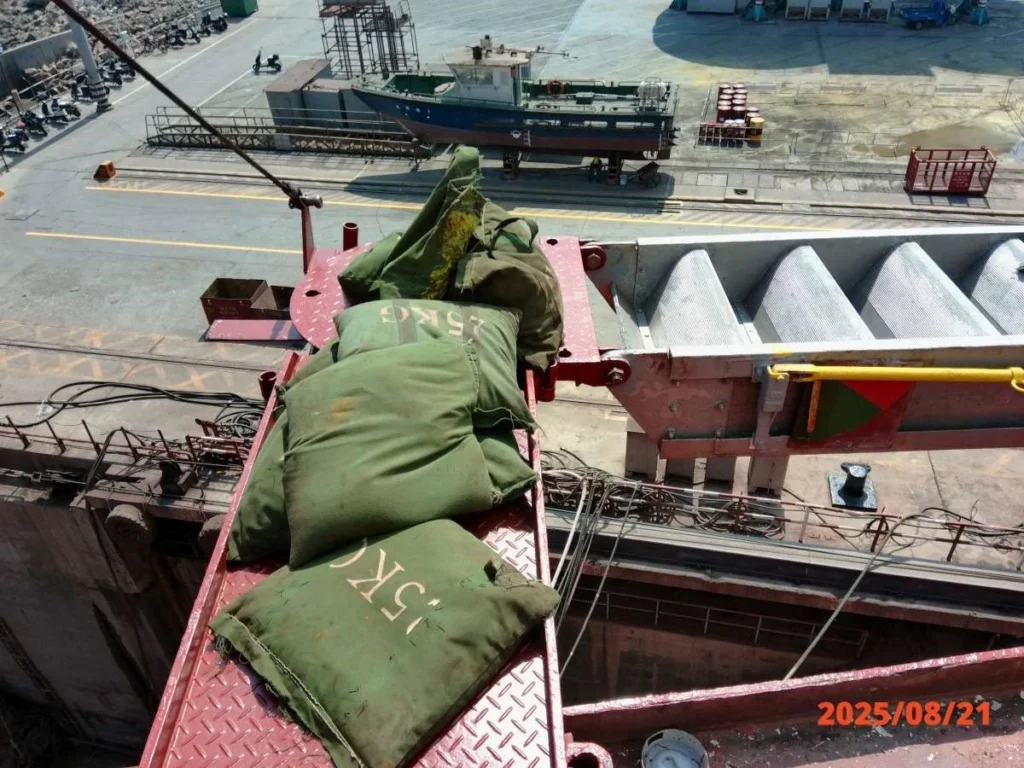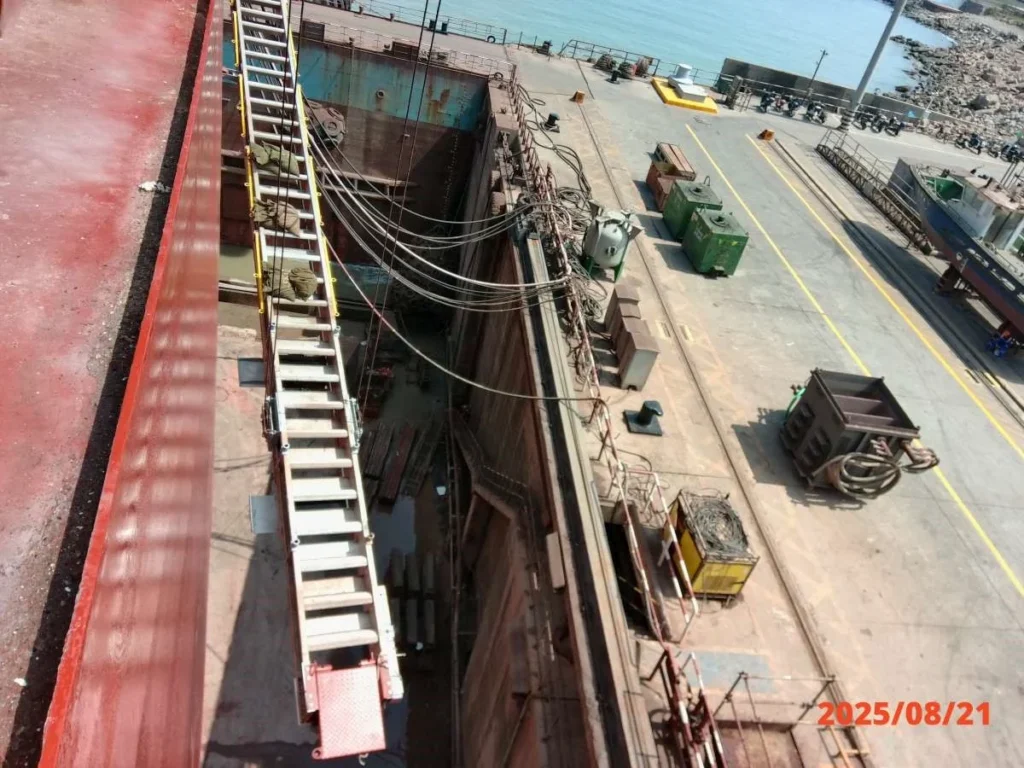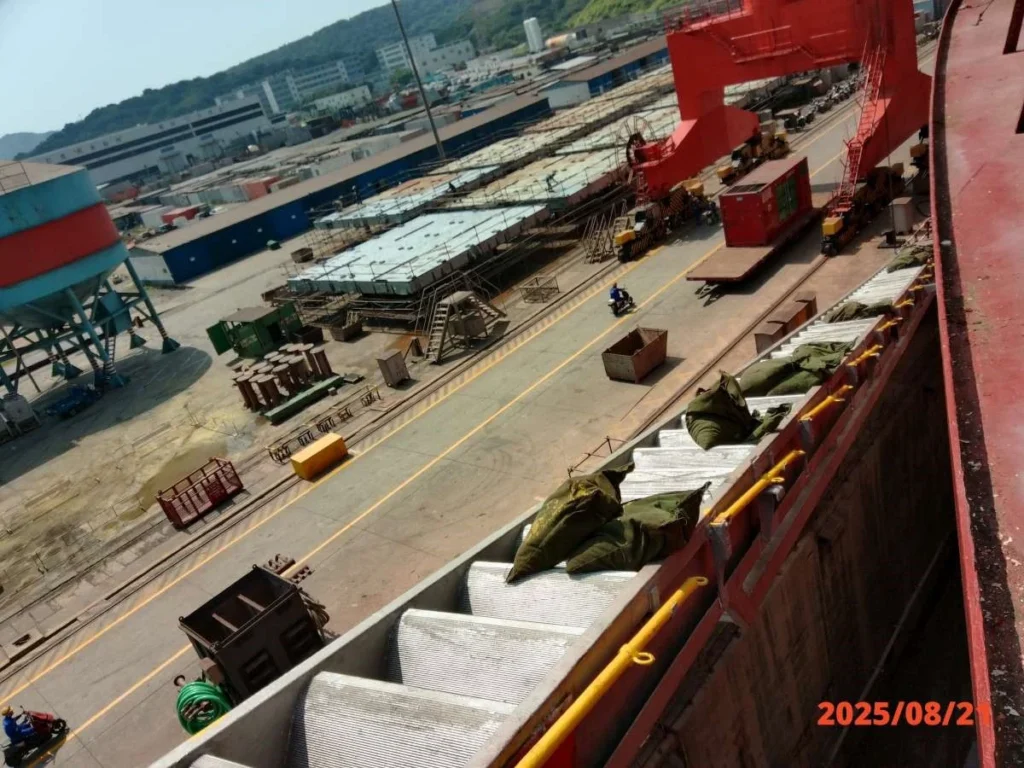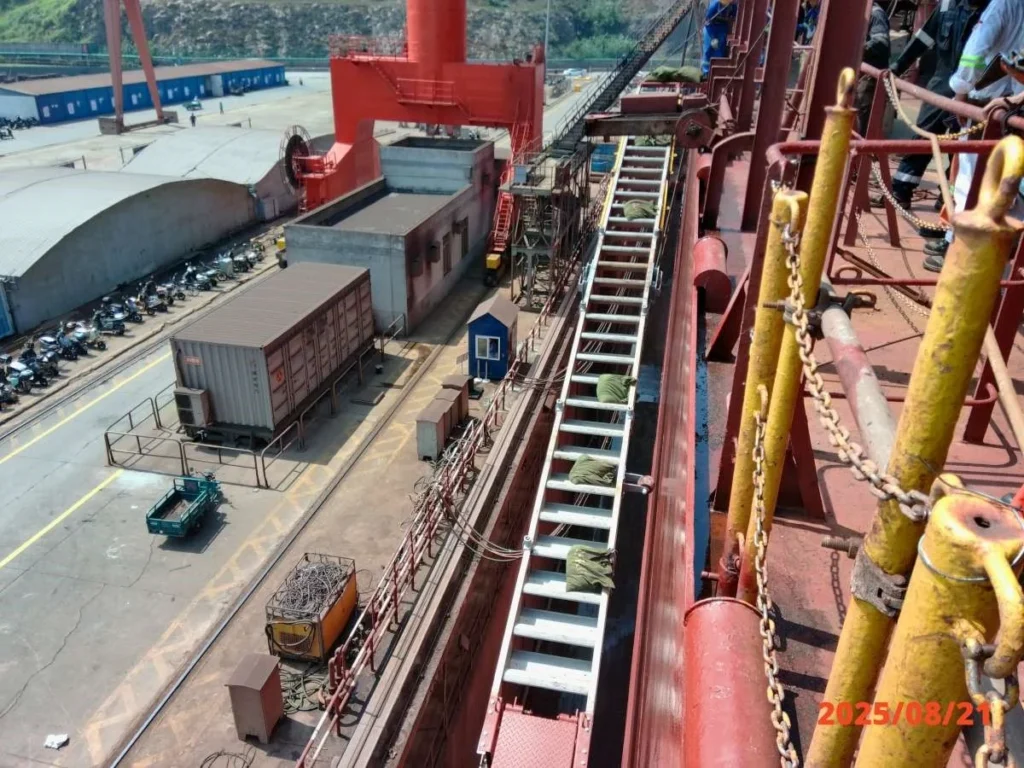A gangway load test demonstrates that the gangway is safe, structurally sound, and fully compliant with IMO and class requirements.
Introduction
The gangway is the ship’s main access point to shore. During a port stay, it may carry hundreds of people — crew, surveyors, agents, or officials. Its reliability is critical. The question is: how do we ensure the gangway can handle this demand safely? The answer lies in a Gangway load test
The gangway load test is a class-required procedure. It’s done periodically, or after structural work, to prove the gangway can safely handle its rated load.
What is a Gangway Load Test?
A gangway load test is a formalized test where weights (usually water bags or solid weights) are applied to the gangway in a loading manner that represents real-world loading scenarios. The purpose is to or structure to verify that the gangway can handle the safe working load (SWL) without permanent deformation, cracks
This test is often witnessed by a Class surveyor or shipyard inspector during dry docking.
Reasons for Load Testing Gangways
- Safety of Personnel
Gangways are a link between ship and shore. A collapse may lead to severe injury or fatality.
- Compliance with Regulations
Gangway load tests are not optional — they’re required under IMO, SOLAS, ILO, and class rules.
- Preparing for Port State Control and Right Ship Inspections
A neglected gangway may result in a definitive deficiency noted during such inspections.
- Equipment Longevity
Load testing may detect faults in welds, corroded pieces, or mechanical issues, prior to an accident.
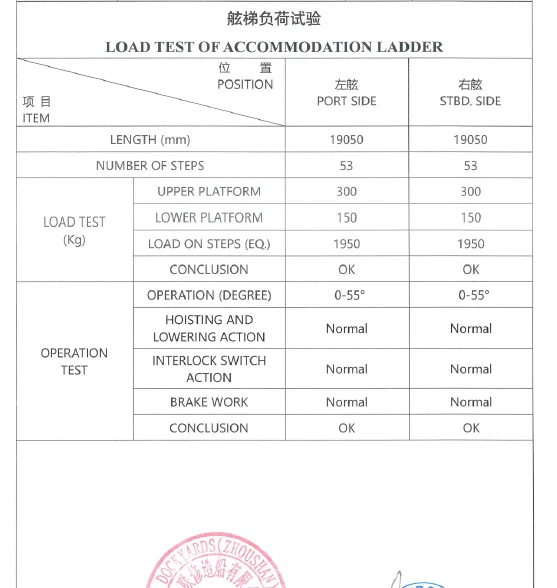
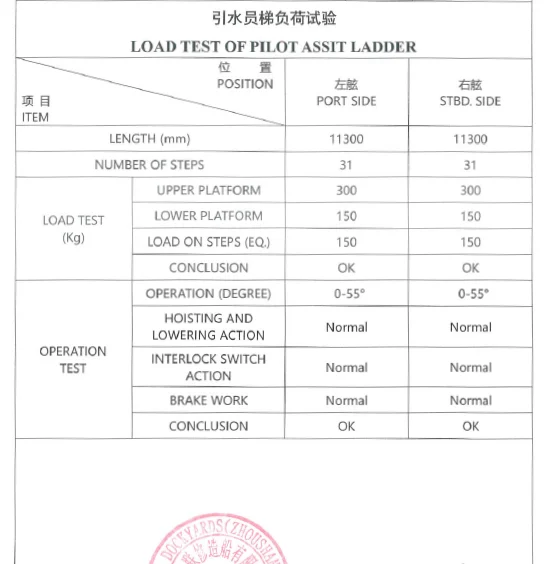
What Is The Process Involved When Carrying Out a Gangway Load Test?
- Making Preparations
Inspect the gangway for cracks, corrosion, or any defect that could affect its strength before the test.
Certificates and any previous testing are verified.
The testing set up gets prepared – weights will be used, often as water bags with calibrated flow meters.
- Loading The Gangway
Generally a test load of 1.25 times the Safe Working Load (SWL) has to be used, following the class/IMO requirements.
For example, if 4 tonnes is the gangway SWL – then 5 tonnes will be the test load.
- Monitoring The Gangway Load Test
The inspector monitors the gangway for bending, deformation, and other unusual noises.
The handrails, stanchions, and treads would be closely observed.
- Post-Load Test Observations
The load is taken off the gangway and checked again.
There must not be any deformity or permanent damage.
There will be a certificate of the gangway load testing issued, and the test load will be recorded and logged in the ship’s reports.
Key Regulations & References
SOLAS Chapter II-1: Structural strength and maintenance.
There are a number of directives managing the maintenance and testing of accommodation ladders. The International Labour Organization Convention No. 152 deals with dock safety and the correct use of access equipment. The International Maritime Organization resolution A.1045(27) provides guidance for pilot ladders and other means of access. Additionally, classification societies (which include Lloyd’s Register (LR), Det Norske Veritas (DNV), the American Bureau of Shipping (ABS), and Bureau Veritas (BV)) have established specific rules for the design, inspection, and certification of accommodation ladders.
For seafarers, especially cadets and junior officers, a gangway load test is more than a formality. It’s a chance to learn. Watch how the test is set up, note how the inspector applies the load, and pay attention to what they check during and after the test.. It’s a rare learning opportunity.
Check test certificates. Always ensure the gangway has a valid load test certificate onboard.
Daily checks matter too. Test certificates aren’t enough. Always check lashings, nets, and stanchions before use, and keep the records straight in the Deck Logbook and Safety Equipment Log
Pro Tip from a Master
During Right Ship or PSC inspections, inspectors often ask for gangway certificates. Make sure the latest load test record is filed properly and available in the safety management system. Never wait until an inspection to realize a certificate has expired!
Conclusion
The gangway may seem to be only a piece of equipment, but in reality, it serves as a vital safety tool. A gangway load test is the means of identifying that the equipment can safely support the people who depend on it every day.
For seafarers, a knowledge of this test adds awareness and professionalism to your daily activities. The next time you walk across your ship’s gangway, take a moment to think about the unseen process that goes into making sure it is strong, stable, and most importantly, safe!
